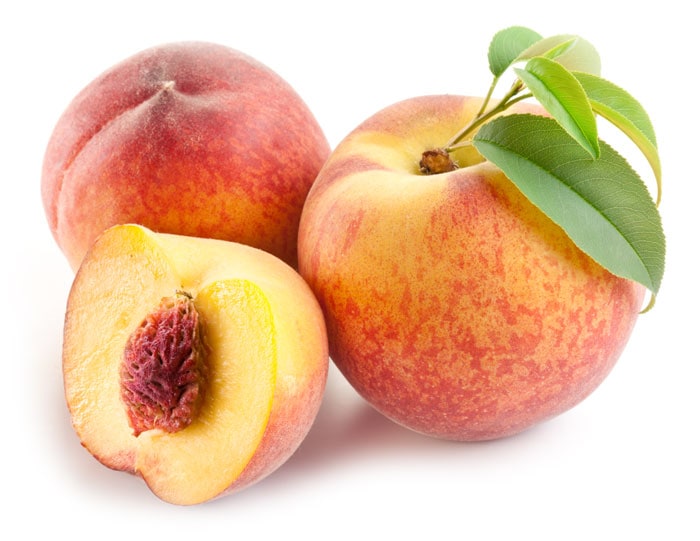
Written By: Sofia Layarda, MPH
Title: Master of Public Health
Alumni: University of California, Berkeley
Last Updated on:

For many of us, favorite summer memories include biting into the sweet, juicy flesh of a peach. Although it’s often known as the state fruit of Georgia (which proudly displays a peach on the state license plate), peaches originate from China, where they were featured in ancient texts and paintings. In the US, California is the main producer of peaches. There are many specific varieties, generally grouped into two types: yellow-fleshed or white-fleshed. Yellow-fleshed peaches tend to be tart, while white-fleshed peaches tend to be sweeter (and can therefore taste sweet while still crunchy). As they ripen, both varieties get softer, juicier, and sweeter. And nectarines? They used to be known as “fuzzless peaches.” A dominant gene codes for the tiny hairs on the skin, so fruits that have the recessive gene will sport the smooth “hairless” skin.
Table of Contents

Besides providing fiber, a peach is a good source of potassium, and the Vitamins A (important for healthy skin and bones) and C (an antioxidant). When buying peaches, follow your nose: the ripest fruits will smell sweet. While the reddish or pinkish hues on the skin may look attractive, they give no clue as to the ripeness of the fruit. A peeled peach will brown as it sits exposed to air, so squeeze a bit of lemon juice on the cut fruit if you are not going to eat it right away. To ripen, leave the fruit on the counter. Refrigerating the fruit will delay ripening.
Alumni: University of California, Berkeley – Sofia believes in bringing back fun and pleasure into everyday eating. She loves cooking, and is constantly experimenting with ingredients, creating recipes and trying them out on family and friends. Her latest interest lies in finding realistic and practical ways of environmentally-friendly food/eating habits.
fiber, fruits, grocery aisle, healthy every month, peaches